Barrier removal work on site at Leverndale Hospital has reconnected staff and patients to National Cycle Network Route 7, enabling more people to access the physical and mental health benefits of travelling actively.
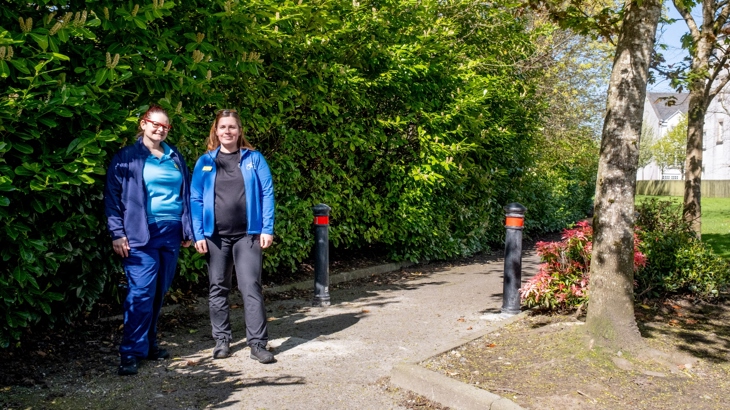
Angela and Hannah are physiotherapists at Leverndale Hospital, a facility which provides in-patient mental health care to adults in the south side of Glasgow. Credit: Sustrans, 2024.
Many people face barriers to participation in walking, wheeling and cycling – whether that’s a result of physical obstructions to a route, health conditions or a lack of confidence.
Staff at Leverndale Hospital, a facility which provides in-patient mental health care to adults in the south side of Glasgow, set out to tackle this.
With funding from the Scottish Government, administered through Sustrans Scotland’s Accessibility Fund, bollards and chicanes which were preventing access to National Cycle Network Route 7 from the hospital site have been removed.
In this blog we hear from physiotherapists Angela and Hannah about the difference this has made to life at the hospital.
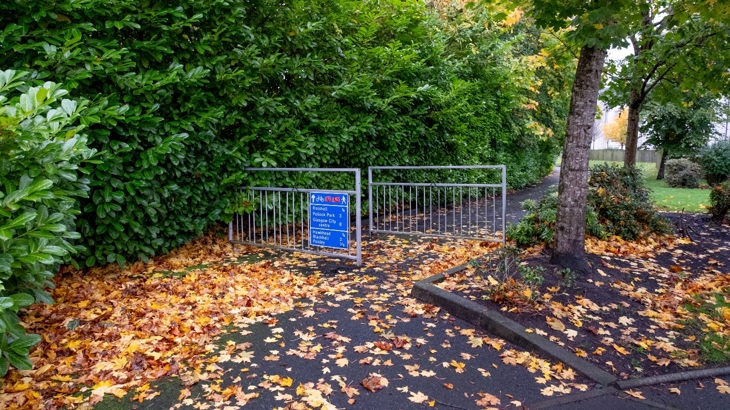
Regular exercise not only improves physical health, but also reduces anxiety and builds self-esteem, confidence and motivation. Credit: Sustrans, 2022.
A ‘unique experience’ for an NHS site
Leverndale Hospital promotes the benefits of active travel for health and leisure through its Pedal 4 Progress project.
Patients are able to take part in cycle training and led rides which are held regularly on site, with some going on to achieve essential cycling skills certificates meaning they can travel independently to work placements and the gym, as well as for leisure.
To ensure everyone is able to participate, there is a fleet of specialist cycles on the ward, including wheelchair tandems and trikes with e-assist.
“It's a totally unique experience for an NHS site to have all these options available”, Angela says.
The benefits of walking, wheeling and cycling
Regular exercise not only improves physical health, but also reduces anxiety and builds self-esteem, confidence and motivation.
Angela describes the difference in her patients before and after going out on the cycles as night and day: “They absolutely love it, it brings an energy to the site”, she says.
“One of my patients was totally adamant he was never going to get on a bike, but after seeing me take other people out on led rides he came up and asked to have a shot at it - he is now trying to purchase his own cycle”.
“Getting off the ward is really, really important”, Hannah adds, “as soon as they [patients] see the cycles they want to go out on them – every week, no matter the weather”.
And it’s not just the patients feeling the benefits.
The number of staff cycling to and from the hospital has been growing steadily too, with space at the cycle shelters hard to come by in the summer months.
“We're working in a difficult environment”, Angela explains, “having opportunities to walk, cycle and get some fresh air is great for everybody”.
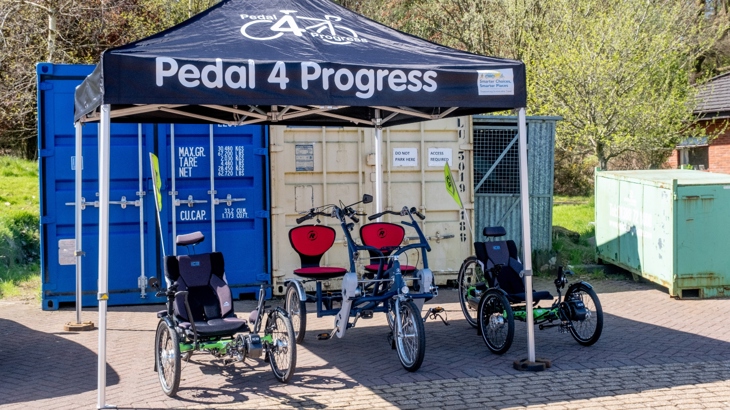
There is a fleet of specialist cycles, including wheelchair tandems and trikes with e-assist on the NHS site to ensure everyone is able to participate. Credit: Sustrans, 2024.
Barriers on site
As the number of patients and staff cycling on and off site increased, it became clear there were barriers preventing some from accessing National Cycle Network Route 7 – particularly when using the specialist bikes.
One patient from the Forensic Learning Disability service tells us it was “annoying” that the first time they went out on one of the sitting bikes they were unable to go the whole way along the route around the hospital.
Another describes seeing someone getting “panicky and nervous going through a narrow space” on a led ride.
“We want to be as inclusive as possible and make sure everyone is involved”, Hannah says.
“With many of our patients there are mental obstacles to getting on the bike in the first place, so to then encounter an actual physical barrier could set them back”.
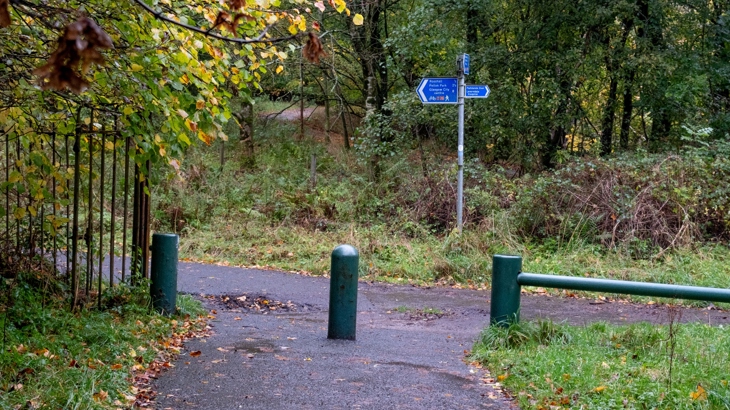
As the number of patients and staff cycling on and off site increased, it became clear there were barriers preventing some from accessing National Cycle Network Route 7 – particularly when using the specialist bikes. Credit: Sustrans, 2022.
Paths for everyone
The NHS applied to Sustrans Scotland’s Accessibility Fund to help remove and redesign the identified barriers on site.
The works included getting rid of several concrete and metal bollards which had been blocking the path, as well as widening chicanes which were too narrow for the specialist bikes and buggies to fit through.
Bins have also been moved and transitions onto the road improved.
Now all patients and staff at Leverndale Hospital can easily and safely walk, wheel, and cycle on the site as well as further afield on the National Cycle Network.
Unlocking new opportunities on the National Cycle Network
With the barriers removed, Leverndale Hospital is more connected than ever to a wider network of walking, wheeling and cycling routes.
Hannah tells us one of the biggest improvements is that they can reach so many more places without needing to go on-road.
“Once our patients start to get a bit fitter and more confident [on the cycles] they want to explore. Now we can take them all the way to Paisley and back”, she says.
“Recently we've had individuals on site with more physical health problems and have found that using the bikes is really good for their rehab”, Angela adds. “Getting them off the ward and utilising the main path has made this much easier”.
The benefits have also been felt throughout the wider community.
Local cycling groups have been campaigning for the path to be opened up for a long time.
“It’s not just about making improvements around the hospital site, it's about our place as part of the larger community of Pollock, Cardonald and the surrounding areas”, Angela concludes. “This is really important.”
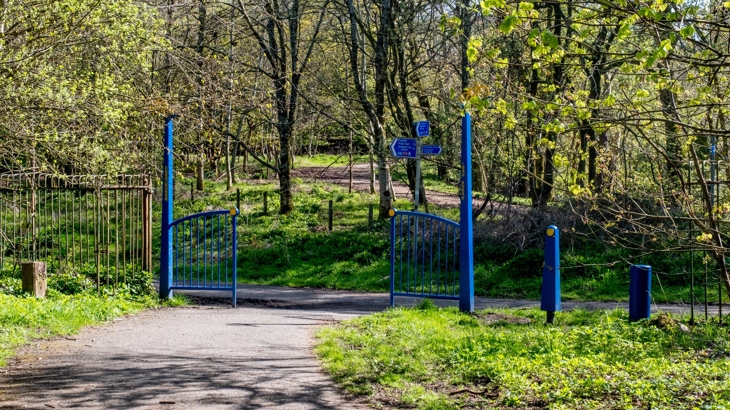
The NHS applied to Sustrans Scotland’s Accessibility Fund to help remove and redesign the identified barriers on site. The works included getting rid of several concrete and metal bollards, as well as widening chicanes which were too narrow for the specialist bikes and buggies to fit through. Credit: Sustrans, 2024.
About Sustrans Scotland’s Accessibility Fund
Sustrans Scotland’s Accessibility Fund is a permanent infrastructure programme, offering funding to address access controls and physical restrictions located on or preventing access to National Cycle Network routes.
The programme is funded by the Scottish Government and managed by Sustrans Scotland.
It is open to anyone who owns, manages or has permission to implement change on land that the National Cycle Network runs on in Scotland.
Read more about our work in Scotland.
Find out more about National Cycle Network routes in Glasgow and the surrounding area.





